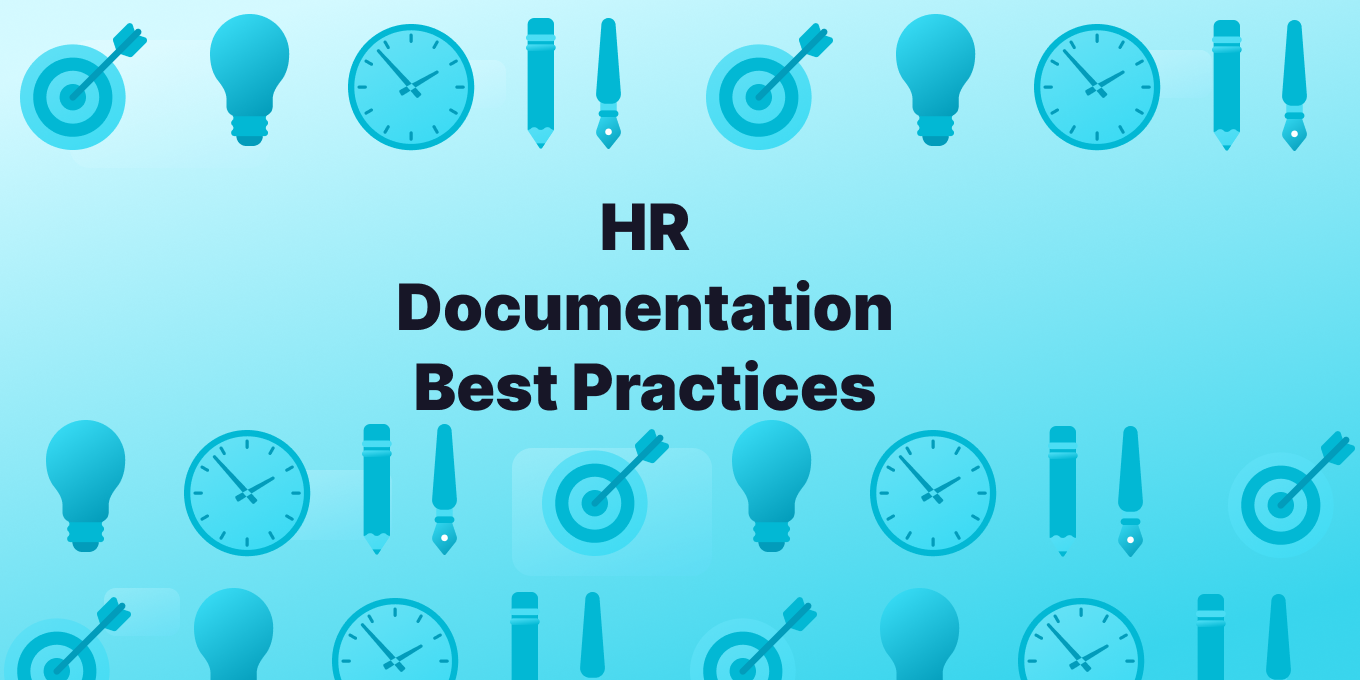Every HR department needs to implement company policies and procedures effectively. One way to do this is through HR documentation, which involves writing down and storing these policies in an internal knowledge base. This method provides employees with clear expectations for their behavior and treatment at work and allows HR professionals to monitor compliance easily. Utilizing an HR document management system can streamline this process.
What Exactly Is HR Documentation?
HR documentation involves creating a written record of company policies and procedures. This documentation serves as a reliable resource for employees to understand how they should be treated and how they should behave at work. Effective HR document management is crucial for maintaining accurate records and ensuring compliance with legal requirements.
HR Documentation Best Practices
- Attendance Policy: Clearly specify work hours to ensure productivity. Maintaining formal documentation helps in tracking attendance and managing HR records. By documenting attendance policies, HR professionals can ensure employees understand their work schedules and the consequences of non-compliance, fostering a disciplined work environment.
- Time-off Policy: Define vacation, sick, and personal days to help employees plan and manage their time off. Proper documentation ensures clarity and adherence to HR policies. Detailed time-off policies allow employees to understand their entitlements and the procedures for requesting leave, helping to prevent misunderstandings and ensuring fair treatment.
- Family Leave Policy: Document maternity and paternity leave details to support employees’ family needs. This is essential HR documentation for compliance with legal requirements. Clearly articulated family leave policies help employees plan for significant life events, ensuring they receive the support they need during these critical times.
- Sexual Harassment Policy: Provide guidelines on recognizing and reporting sexual harassment to maintain a safe work environment. HR professionals should ensure this policy is well-documented and easily accessible. Comprehensive sexual harassment policies demonstrate a company’s commitment to a respectful workplace and provide a clear process for addressing issues, fostering a culture of safety.
- Benefits: Outline your company’s benefits to help employees leverage them effectively. Documenting this information in HR templates can improve employee satisfaction and retention. Well-documented benefits policies ensure employees are fully informed about the resources available to them, aiding in their overall well-being and job satisfaction.
- Promotion Cycles and Reviews: Inform employees about promotion timelines and review processes. This is an important part of the HR documentation process to motivate and retain employees. Transparent promotion and review policies help employees understand how they can advance within the company, boosting morale and encouraging high performance.
- Payroll Information: Detail payment schedules to aid employees in financial planning. Accurate HR records are crucial for payroll management. Clear payroll policies help employees plan their finances effectively and ensure timely and accurate compensation, contributing to their financial stability.
- Non-compete Clause: Explain the terms of any non-compete agreements to prevent misunderstandings. Proper documentation helps protect the company’s interests and ensures legal compliance. Detailed non-compete clauses help employees understand the limitations on their post-employment activities, protecting the company’s proprietary information and business interests.
- Onboarding: Document a comprehensive onboarding process to ensure a positive first impression for new hires. Utilizing HR software for onboarding can streamline this process and ensure consistency. A well-documented onboarding process helps new employees integrate smoothly into the company, ensuring they understand their roles and responsibilities from the start.
Importance of Knowledge Management in HR
Knowledge management is critical in HR as it involves systematically capturing, organizing, and sharing information across the organization. Effective knowledge management ensures that essential HR documents, such as policies, procedures, and templates, are easily accessible to all employees. This accessibility helps in maintaining consistency, improving efficiency, and ensuring compliance with legal requirements. Moreover, it supports informed decision-making and fosters a culture of continuous learning and improvement within the organization.
Getting Started with HR Documentation
Begin documenting your company’s policies and procedures in an internal knowledge base. This will help employees understand their responsibilities and reduce the need for disciplinary actions. Using document management software can make this process more efficient and ensure all essential HR documents are easily accessible.
HR documentation is vital for setting clear expectations and ensuring compliance with company policies. By using an HR document management system, you can streamline the documentation process and maintain accurate records.
Start building your knowledge base today to support your HR processes and improve employee satisfaction.
Use Tettra for Your Internal Knowledge Base
Tettra is a top choice for HR documentation due to its comprehensive features and ease of use.
- User-friendly interface: Simplifies navigation and document management.
- Efficient organization: Allows for easy categorization and retrieval of documents.
- Collaboration tools: Enables team members to update and share information seamlessly.
- Integrations: Works well with Slack, Google Drive, and other popular tools.
These features ensure that HR documentation is always current, accurate, and easily accessible, fostering effective knowledge management within the organization.


